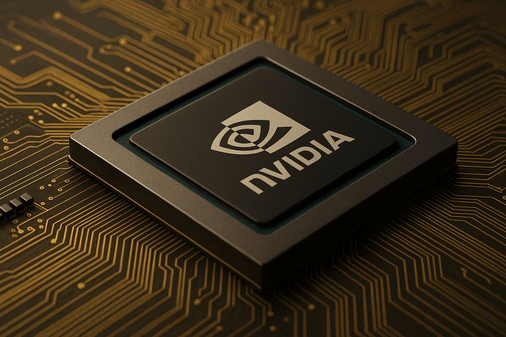Nvidia revenue for the second quarter of its 2026 fiscal year totaled $46.7 billion, according to the company’s latest financial report.
This marked a 6% increase from the previous quarter and a 56% jump compared to last year.
Net income reached $26.4 billion, while earnings per share stood at $1.08 using GAAP and $1.05 on a non-GAAP basis.
The company reported a profit margin of 72.4%, underscoring its strong results despite restrictions on Nvidia H20 sales.
Shares of Nvidia declined 3.3% in after-hours trading Wednesday, following the announcement.
Nvidia Holds Global Lead in Market Value
With a market capitalization of more than $4.4 trillion, Nvidia remains the world’s largest publicly traded company.
Its processors, widely used in artificial intelligence and computing, give the company significant weight in both global markets and U.S. policy planning.
The firm’s role has expanded beyond commercial applications. Washington considers Nvidia’s chips strategically important as tensions with China continue. Recent reports also noted that Nvidia addressed vulnerabilities in its AI software stack with a security update.
Nvidia H20 Sales Blocked in China During Quarter
The company confirmed that Nvidia H20 sales to China did not take place during the quarter. “There were no H20 sales to China-based customers in the second quarter,” the firm stated in its earnings disclosure.
The H20 chip is a reduced-performance version of the H100 processor, designed for the Chinese market to comply with U.S. export rules. Despite its adaptation, the processor was barred from export, leaving Nvidia China operations without revenue from this line.
The report highlights how Trump administration export controls directly restricted sales of H20 units, a key factor for Nvidia’s China revenue.
Trump Administration Export Controls on H20 Chips
In January 2025, the Trump administration announced tighter restrictions on Nvidia H20 sales to China, citing “national security” concerns. The policy targeted high-performance processors used in advanced AI development.
The rules required export licenses and imposed fees totaling about $5.5 billion, effectively halting shipments.
Nvidia confirmed that its China business for this chip was frozen during the entire second quarter of fiscal 2026.
The export controls remain one of the most significant limitations on Nvidia revenue from China.
Limited Reversal Opens Door for H20 Shipments
In August 2025, the Trump administration export controls shifted. The government allowed Nvidia H20 sales to China to resume under strict terms.
Nvidia must transfer 15% of revenue from H20 sales in China to the U.S. government as part of the arrangement.
This reversal enabled partial access to China, but no sales were recorded in the second quarter. Nvidia has not disclosed future revenue projections for H20 shipments under the new policy.
For now, Nvidia revenue growth came entirely from other markets, while Nvidia China results stayed limited by U.S. restrictions.
Disclosure:This article does not contain investment advice or recommendations. Every investment and trading move involves risk, and readers should conduct their own research when making a decision.
Kriptoworld.com accepts no liability for any errors in the articles or for any financial loss resulting from incorrect information.

Tatevik Avetisyan is an editor at Kriptoworld who covers emerging crypto trends, blockchain innovation, and altcoin developments. She is passionate about breaking down complex stories for a global audience and making digital finance more accessible.
📅 Published: August 28, 2025 • 🕓 Last updated: August 28, 2025


